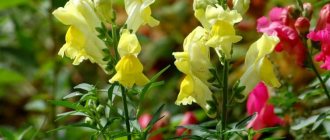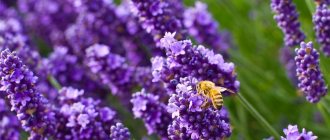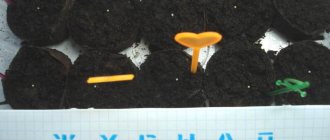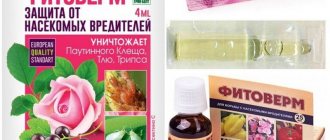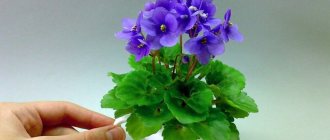Eustoma - one of the most mysterious and delicate flowers in our garden. Beauty has other interesting names - Irish rose, lisianthus. Having such a plant in your flower garden is a real luxury, but accessible to every gardener. In order for the plant to delight you with flowering in the summer, you need to start growing eustoma flowers from seeds at home in advance.
What you need to know about eustoma
Eustoma in our rather cool climate is grown as an annual. Although by nature it is a perennial plant. Suitable for growing both in open and protected ground. The Irish rose, as it is also called, blooms for 5-7 months. Lisantius is picky about temperature and lighting. Therefore, early varieties are used for flower beds (so that the cold does not shorten the flowering period).
It is difficult to grow eustoma without additional lighting, so it is usually planted in late February - early March, when daylight hours increase.
When to plant eustoma seeds for seedlings
Any gardener who has firmly decided to take up this business will have a question - when to plant seedlings for growing eustoma from seeds? When choosing the optimal sowing time, it is necessary to take into account the fact that the plant has a very long growing season. After the emergence of seedlings, it can take from five to seven months for the lisianthus to bloom, so you need to sow the seeds no later than January (at least in February) . If you choose this time for planting, you can see flowering in early or mid-summer.
Of course, you can choose a later time for sowing, for example, in March-April, but in this case you will see flowering only in late summer-early autumn.
The most optimal time for planting eustoma is January.
The cycles of the moon come to the aid of many gardeners and flower growers, thanks to which they can determine the most suitable dates for the event and protect themselves from sowing on inappropriate days. Dates for planting eustoma seeds for seedlings according to the 2022 Lunar calendar:
- Favorable days: in January: 1, 10, 11, 15, 16, 19, 20;
- in February: 7, 8, 12, 13, 14, 15;
- in March: 10, 11, 15, 20, 21, 24, 25.
- Unfavorable days: in January: 2, 18th;
- in February: 1, 16;
- in March: 2, 16, 17, 18, 31.
https://youtu.be/qxy86SF7_oQ
Choosing a pot/container
You can grow indoor eustoma in a permanent pot to save yourself the need to pick.
If you plan to transplant it into a flowerbed in the future, you will need 3 types of containers:
- A plastic rectangular container with holes in the bottom - for germination.
- Plastic cups - for diving.
- 0.5-liter plastic glasses or peat pots (they do not need to be removed when transplanting to a flowerbed) - for transferring.
Growing indoors
Low-growing varieties, which are compact bushes up to 45 cm high, are well adapted to growing in pots as biennials. However, they will have to be carefully looked after, showing maximum attention and care. Maintaining eustoma, which sensitively responds to the slightest changes in the microclimate in the house, is really not an easy task. The duration of flowering and the decorative appearance of flowers will depend on many parameters and strict adherence to the rules.
The plant, being in cramped circumstances, places high demands on lighting, the composition of the soil in the pot, humidity and ambient temperature.
One to three seedlings can be placed in a 2.5 liter container
To create the necessary conditions, it is good to use an air humidifier, since it is impossible to spray the above-ground part of lisianthus . In a small container it is difficult to control soil moisture and the frequency of fertilizing. They are advised to be done more often than indicated in the instructions for the drug, but in a lower dosage. Growth inhibitors for dwarf varieties are used only in the initial stages, during the period of growing seedlings.
After flowering, eustoma loses its decorative effect and begins to prepare for a period of rest. The shoots should be trimmed so that no more than three internodes and a couple of leaves remain. The plant is transferred to a cool room, watering is reduced to once a month, and feeding is stopped completely.
It is important not to miss the moment when the plant wakes up and begins to produce new shoots. At this time, it needs to be moved back to a warm room with good lighting, and watering and fertilizing should be resumed.
How to dive and transfer
Do not be alarmed if the seedlings, at first glance, have stopped growing. They just grow roots.
Picking is carried out immediately after the appearance of the first pair of leaves. Together with the earthen lump, I transfer them into special containers for diving, which we talked about earlier. It is important not to deepen the root collar - it should remain at the same level as before picking.
After transshipment, the seedlings are watered with a solution of Fundazol. Feed once every 15 days. To do this, use potassium- and phosphorus-containing preparations. Water only when the top layer of soil begins to dry out.
When the risk of frost completely disappears, you can replant the plant in open ground or a permanent pot. The procedure is no different from the diving process. It's better to do it in the late afternoon.
In the Becker store you will find a large assortment of flower seeds.
From us you can buy seeds of biennial flowers, seeds of annual flowers, perennials and indoor plants. Author: Natalya Palamarchuk
How to care for lisianthus seedlings
To grow healthy and high-quality seedlings at home, you need to take proper and complete care. It is important both immediately after sowing and subsequently, including after picking.
Pre-emergence care
It is necessary to care for lisianthus seedlings after sowing and before the first shoots appear as follows:
- Immediately sowing the seeds, it is necessary to cover the planting box or tray with peat tablets . Manipulation allows you to create a mini-greenhouse, thanks to which the seedlings will be in optimal conditions before emergence. Higher humidity will allow seedlings to emerge faster.
- It is necessary to ventilate the seedlings daily . To do this, remove the lid, film or glass for 20 minutes every day. Accumulated condensation on the covering material should be wiped off with a cloth so that the humidity is at the optimal level.
- The container should be placed in a warm, bright place .
- The temperature should be maintained around 22-25 degrees Celsius.
- Watering after sowing is an extremely important element of care; before the lisianthus sprouts, you need to be especially careful about the humidity. At this stage it is necessary to water by spraying . Watering is done regularly; the soil should not be allowed to dry out.
Care after emergence
After the seedlings appear, caring for Irish rose seedlings changes slightly:
- After germination (after about 10-15 days), you need to permanently remove the film, glass and lid.
- The temperature regime is changing - now t during the day is 18-22 degrees Celsius, and at night - 16-18 . The temperature should not be higher or lower than the recommended values.
- Eustoma seedlings are moved to a sunny windowsill (preferably south or southwest).
- For normal growth and development of lisianthus seedlings, it is necessary to provide normal lighting. The optimal length of daylight is 12-16 hours . If necessary, be sure to illuminate the plants with lamps.
- Keep an eye on the humidity. If the air in the room is excessively dry, it is recommended to sometimes use a humidifier , but do not overdo it.
- Watering after the emergence of Irish rose shoots is carried out as the soil surface dries. The soil should always be moderately moist . The substrate should not be allowed to dry out, but overwatering is also dangerous due to the appearance of blackleg or other fungal diseases. You need to water carefully so as not to damage the above-ground part of the plants; it is recommended to use a syringe and add water along the edge.
- An important step in caring for eustoma seedlings is feeding. It is done after picking, so more on that below. But before picking, you can spray the seedlings with a solution of the drug "Epin" , this should be done in the early morning or late evening.
- When the seedlings have 3-4 pairs of true leaves, you can pinch the top of the plant . Pinching is necessary to stimulate the growth of side shoots, which will help the plant become lush and branch well in the future. Seedlings of tall varieties need to be pinched, but low-growing ones do not need to be pinched.
Types and varieties of eustoma
Currently, about 60 varieties of eustoma are known. It is customary to grow Russell's eustoma at home. A variety with large flowers is suitable for open ground. There are flower growers who grow both varieties in the garden. And it does not make distinctions between eustoma varieties. Types of Irish rose differ from each other in height, color, flower shape, as well as the duration of flowering.
The most popular varieties of tall eustoma are listed below:
- Aurora. The flower has blue, white, light blue or pink buds and is distinguished by early flowering.
- Echo. It grows up to 70 cm, has spreading stems and large buds. There are 11 color varieties of this variety grown.
- Heidi. Reaches a height of 90 cm, characterized by frequent flowering. The variety has 15 color varieties.
- Flamenco. The tallest and most picky variety, which can reach 90-120 cm. Large flowers have many shades.
The following varieties are suitable for planting eustoma at home:
- Mermaid. A low branched plant, stems 12-15 cm long, small flowers can be white, blue, pink or purple.
- Little Bell. Reaches a height of 15 cm and does not need clothespins, has simple funnel-shaped cups of various shades.
- Eustoma Fidelity. A white flower up to 20 cm high, on which numerous simple buds are arranged in a spiral.
- FloridaPink. A variety that has pink flowers that form a bouquet of regular shape.
Lisianthus is one of the most beautiful garden flowers and if grown correctly, it will not only not create unnecessary difficulties, but will be pleasing to the eye.
When to pick eustoma
You can pick out the eustoma as soon as 2-3 pairs of true leaves appear on it. This usually occurs after 6-8 weeks. It is very important to pick on time; this process cannot be delayed, and do not be alarmed by the small size of the seedlings. After all, if you miss the right moment and they manage to grow more than necessary, when picking, the danger of damaging the eustoma roots will increase.
Picking is a painstaking task and requires extreme caution. Your work should be truly exquisite, because it is this that will ensure rapid and high-quality growth for the eustoma in the future. In order to pick seedlings more quickly and efficiently, use a thin awl - this will help remove tiny bushes from the soil with the least damage.
Feeding eustoma with organic matter
Increases fertility, activates the work of beneficial microorganisms, and saturates the soil with essential elements. Does not give a quick effect, but has a prolonged effect. Eustoma is fed:
- humus - a natural source of nitrogen, formed when the manure of herbivores and plant residues rots;
- mullein - fermented cattle excrement. 20% consist of nutritional compounds (nitrogen, phosphorus, potassium, calcium);
- wood ash – rich in potassium and phosphorus, gently normalizes acidity.
With the help of organic matter, you can “force” the eustoma to bloom again. To do this, the bush is cut flush with the ground and compost is added. As a result, the culture does not go into hibernation, but begins to grow again.
Tips for the garden, vegetable garden and flower garden
Violet care at home to bloom
How to properly prune and cover a rose for the winter
How to prune fuchsia for the winter
Organics produced from bird droppings or manure are sold in gardening stores. It is dried, compressed, and easy to use.
Eustoma is not the easiest flower to plant and care for, but the feeling of celebration that the opened buds give to their owner makes all the trouble worth it. Moreover, the florist can always choose an option that is acceptable to him - growing eustoma in a flowerbed, in a winter garden, on a loggia and balcony, or in an apartment on a windowsill. Even when cut, the flower retains its decorative effect much longer than many of its fellows.
Common mistakes gardeners make
Fertilizer application carried out in violation of technology will not bring the expected result. Many gardeners make the following mistakes:
- They overfeed the eustoma - the principle “you can’t spoil the porridge with butter” does not work here. It is better to add a little less nutrients than to have an excess of them. An imbalance of elements impairs the absorption of other compounds and the decorative qualities of the crop. With a severe overdose, the eustoma may die.
- Inappropriate formulations are used - nutritional needs change as they grow. In the early stages, crops need nitrogen, and during budding and flowering - phosphorus and potassium. The introduction of the wrong formulations will not bring a positive effect.
- Fertilizers are applied to dry soil - in order for the substances to dissolve in the soil and pass into an accessible form, water is needed. Contact of the solution with the roots can cause burns.
- They use expired fertilizers - after the period specified by the manufacturer has expired, they stop working. Products marked with “unlimited agrotechnical use” are allowed to be introduced only under strict observance of storage conditions. Fresh and crumbly preparations dissolve faster and are better absorbed.
- Fertilizers are selected incorrectly - some types of fertilizers cannot be mixed and applied at the same time. In this form they do not bring positive results.
Proper feeding will allow you to grow a strong and beautiful eustoma. When choosing a drug, take into account the needs of the crop at a certain stage of growth. In order not to harm the flower, follow the permitted dosage and application rules.
https://youtu.be/NUMNzTygJDc
Eustoma in cut
The stems are cut using a well-sharpened knife or pruning shears. All lower leaves are removed, otherwise they will rot in the water. Cut flowers can last in a vase for about two weeks. Specialized additives Chrysal, Tsvetalon, Bona Forte, and Etisso can prolong their freshness in the bouquet.
The variety of colors and shapes of flowers allows you to create bright bouquet compositions
Care after picking
Picking is stressful for any plant. Therefore, after picking, you need to care for the eustoma more carefully so that it takes root.
For the first 5-6 days, protect the plants from direct sunlight and keep the soil moist for better rooting.
In general, it is recommended to reduce light intensity and provide high humidity to minimize picking stress.
Watering
After the first picking and until planting in the flowerbed, water the seedlings exclusively at the root. To avoid washing out the roots when watering, use a rubber bulb or a syringe with a needle.
Under no circumstances should seedlings be watered from above. Drops of water should not fall not only on their leaves, but also on the stem.
It is recommended to water the seedlings in the first half of the day so that the plant has time to absorb the maximum amount of moisture. In addition, it helps reduce the occurrence of blackleg.
Top dressing
We are often asked how to feed eustoma seedlings after picking and whether it is necessary to do it at all. There is no need to feed it with fertilizers for the first 12-14 days, since the soil mixture contains a sufficient amount of nutrients.
Moreover, if you transplanted it into a high-quality substrate, then you can wait 30-40 days with fertilizing. But sometimes it’s hard to control yourself, because you want this beauty to grow up as quickly as possible.
However, be prepared that during the first 1.5-2 months after the first picking, the vegetative mass slowly increases in size as the root system develops more. Often, the plant may freeze in one place and not respond to any feeding.
Shoots have appeared, what to do?
Eustoma shoots appear rather slowly. At first you see a small green dot, which then resembles an arc. The future stem gradually straightens and after 2-3 days tiny leaves are already visible.
- Seedlings need the maximum amount of light, so place the “greenhouse” in the brightest place on the windowsill or keep it under a lamp. Daylight hours should last at least 13-16 hours.
- Seedlings need to be grown at a temperature of 18-24 °C. At the same time, at night it should not rise above 22 °C and fall below 15 °C. Try to find a balance between the radiator and the window. If the “greenhouse” is on a windowsill, then be sure to place a blanket or blanket under its bottom and on the side of the window.
- For the first 3-4 days after massive seed germination, ventilate the container for 10-20 minutes in the morning and evening. Every morning, lightly moisten the soil between shoots using a syringe with a needle.
- After the formation of the first pair of leaves (3-5th day) for all seedlings, the container no longer needs to be closed. However, if not all the seeds have sprouted or it’s cold at night, then keep the “greenhouse” open from morning until evening, and cover it with a lid at night so that they can still germinate. This regime can last up to 10-15 days.
Ventilation promotes better adaptation of seedlings to room conditions and helps prevent the appearance of rot from excessively high air humidity.
Eustoma shoots are 7 days old.
Diseases and pests
Under unfavorable weather conditions, damp and cold weather, or improper care, even healthy seedlings can become susceptible to diseases. The main diseases of eustoma are fusarium leaf wilt, late blight, powdery mildew, gray and root rot, as well as tobacco mosaic. Almost all of them are successfully treated with antifungal drugs, except for the last one. If the plants are infected with the tobacco mosaic virus, the plantings will have to be destroyed and burned.
Various ways to combat common diseases are described in detail in our articles “How to get rid of late blight on tomatoes” and “How to get rid of powdery mildew on phlox.”
Few insects attack the “bitter flower”. Only spider mites and aphids can cause serious harm. At the first signs of pests, you should not wait until they completely destroy the flowers. For protection and prevention, you need to use appropriate drugs (“Aktara”, “Fitoferm”).
Feeding eustoma scheme
Regular feeding ensures active growth and flowering of eustoma. What to feed is chosen depending on the stage of flower development. Scheme:
- 14 days after planting the plants in the ground;
- with active growth of shoots in spring;
- during the formation of buds;
- at the beginning of flowering.
Before flowering, plants are fed with nitrogen fertilizers. For the first time, use an infusion of mullein or bird droppings in a ratio of 1:15. Instead of organics, urea or ammonium nitrate is used. Add 2 tbsp to 10 liters of water. fertilizers
When buds form, feed the plants with complex preparations containing nitrogen, phosphorus and potassium.
A universal option is nitrophoska. Add 50 g of fertilizer to 10 liters of water. Indoor and garden flowers are watered at the root.
During the growing season, it is better to alternate the use of minerals and organic matter. When flowering, eustoma is not fed. After completion, the soil is dug up, fertilized with humus and wood ash. It is convenient to combine feeding eustoma with watering. For processing, choose a cloudy day or evening period. Solutions are used immediately after preparation.
Answers to frequently asked questions
What is the best place to sow eustoma?
The peat tablet contains all the necessary minerals in the seed to stimulate the growth of the root system. It is disinfected in advance, which additionally protects against diseases and viruses.
However, some gardeners adhere to the classical methods of planting in a common container with further picking.
How do you understand that it’s time to dive the eustoma?
The first pair of true leaves grew on the seedling (4 leaves in total). The young plant itself looks healthy.
Is it possible to dive into common cassettes?
Yes, if they have enough space for further growth.

